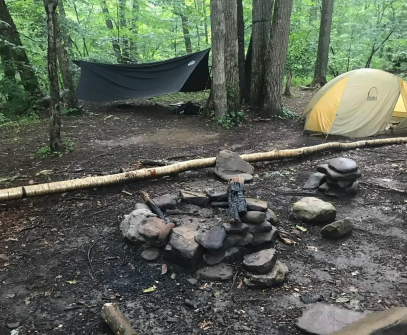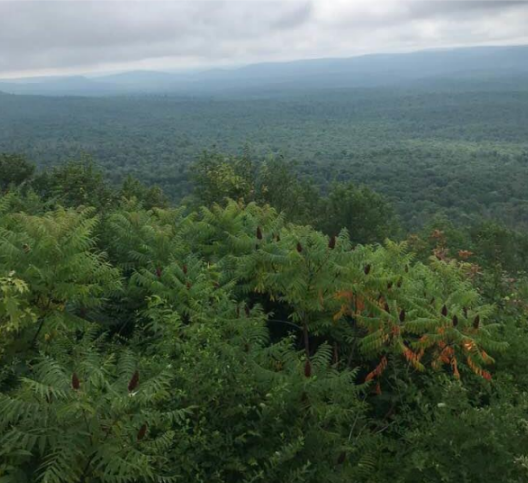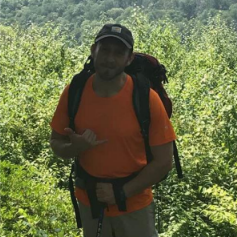A New Visit to an Old Pennsylvania Wilds Path
By Michael Hoffman
The eerie morning mist was still lifting from the forest floor while sunray fingers broke through the hardwood trees above, touching lush vegetation and sea-green rock faces guiding the brook below. Enchanted by the totality of verdant space that beset me, I understood at once that I was experiencing an eastern deciduous forest in all its rapture. Lured by postcard-like forest scenery, fabled “ghost towns,” and the liberation that comes with thrusting oneself into the wild, my brother Eric and I embarked along the Old Loggers Path, traversing one of the most picturesque, heritage-rich places in Pennsylvania.
Our starting point was Masten, formerly a lumber mill town (and later a CCC camp) in Lycoming County, where ruins of houses and a dam used for a sawing operation can still be seen. The mill town was founded in 1905 by Charles Sones and was sold about ten years later to the Pennsylvania Lumber Company. The Susquehanna & New York railroad grades that once serviced the area now support much of the Old Loggers Path, and Eric and I set out on those on our first day to cover 17 miles of the 27-mile hike.
Per happenstance, the temperature was a sweltering 90 degrees, so swimming to cool off became the norm. Conveniently, Old Loggers Path passes alongside the shaded and spectacular Rock Run, whose deep, cool-running flows provided some relief in the middle of the day.
By evening, we reached the shores of Pleasant Stream, where we set up camp, swam again, and cooked food on my little stove. While cooking streamside, I noticed brook trout rising to feed on the evening’s critters—a sight which brought me great delight—and I regretted instantly that I was without my fly rod. I also noticed how the storm of 2016 flooded the landscape and drastically altered the stream channel, leaving in its wake a dramatic wash-out of small boulders. After supper, Eric and I settled in for the evening by the campfire and recounted some funny moments of the day before turning in.

Early in the morning, heavy rain began to fall. These are the moments when it pays to come prepared. My tent kept the water out, and I slept comfortably for a few more hours until the rain stopped. When the skies finally cleared; we made some instant coffee, packed our gear, and headed out.
As we climbed out of Pleasant Stream valley, we came upon a big clearing with some yellow equipment parked within. I took advantage of the opportunity to explain to Eric the timber harvesting process that continues in Penn’s Woods. I was reminded of what an important role the Bureau of Forestry plays in connecting people with forest resources. Utilization of our state’s rich resources has provided for countless families. The legacy of Old Loggers Path continues!
Later, we arrived at some vistas overlooking the valley below. Being aloft gave us the vantage to see much of the land at once. It was a great spot to contemplate our place in the world before moving on to the last leg of the hike.
By evening, we finished where we started—at Masten. Everything looked the same, but I knew we emerged with a fresh perspective. Eric and I talk about it often, and we always have our sights on the next hiking opportunity.

While wilderness travel translates to some degree of physical discomfort, the feelings of accomplishment, aesthetic experience, and transcendental connectedness can be great. This was indeed the case on the Old Loggers Path!
About the Author: Michael Hoffman works in the Bureau of Forestry’s Planning Section within the Division of Forest Resource Planning and Information. He has been employed with PA Department of Conservation & Natural Resources (DCNR) for roughly six years and holds degrees in Communications and Biology. Mr. Hoffman has hiked all over the world, including the American West, Himalayas, Costa Rica, New Zealand, Southeast Asia, and South Pacific Islands. His other interests include fly fishing, cooking, and playing guitar. This article was originally published in the September 2018 “Trails Month” edition of DCNR Bureau of Forestry’s “Forest Fridays” e-newsletter. Learn more about DCNR here.



